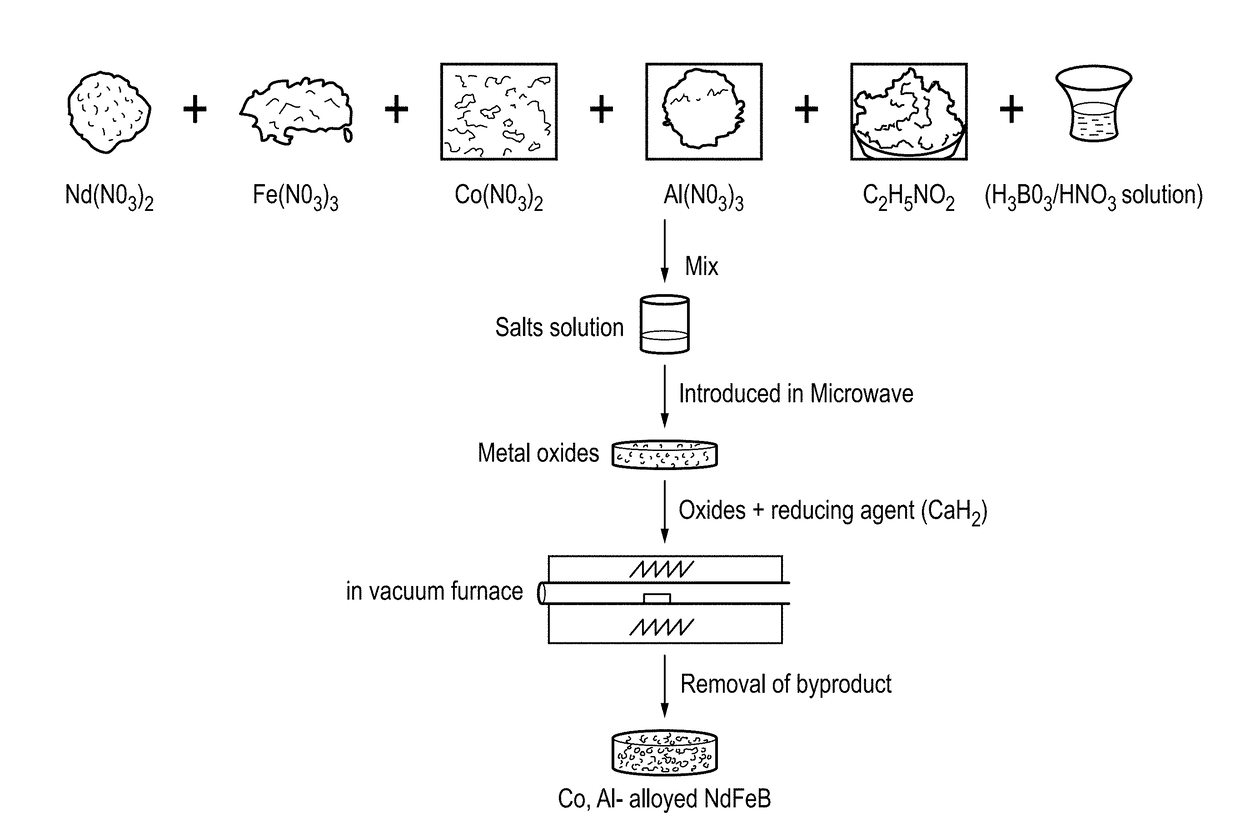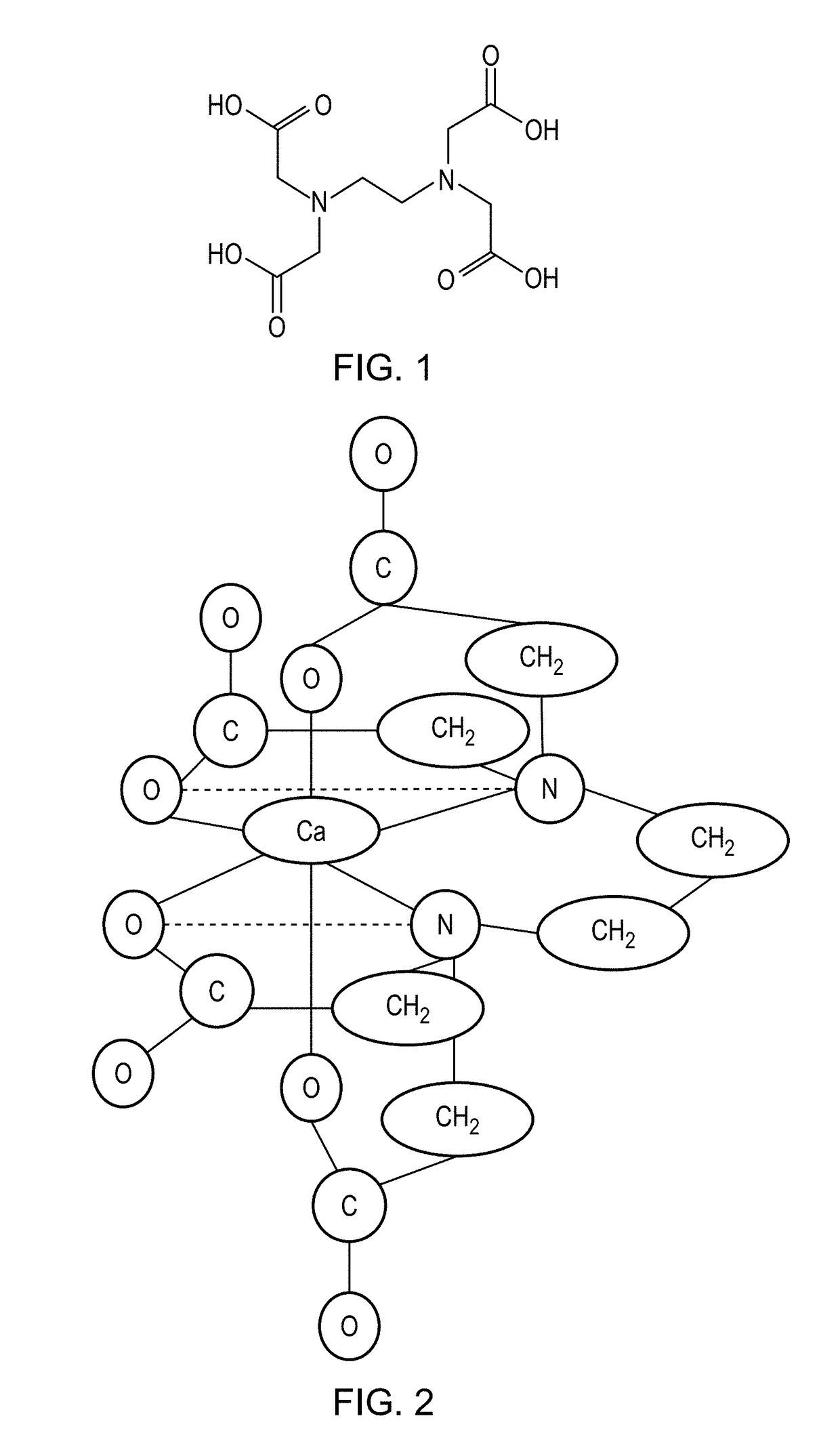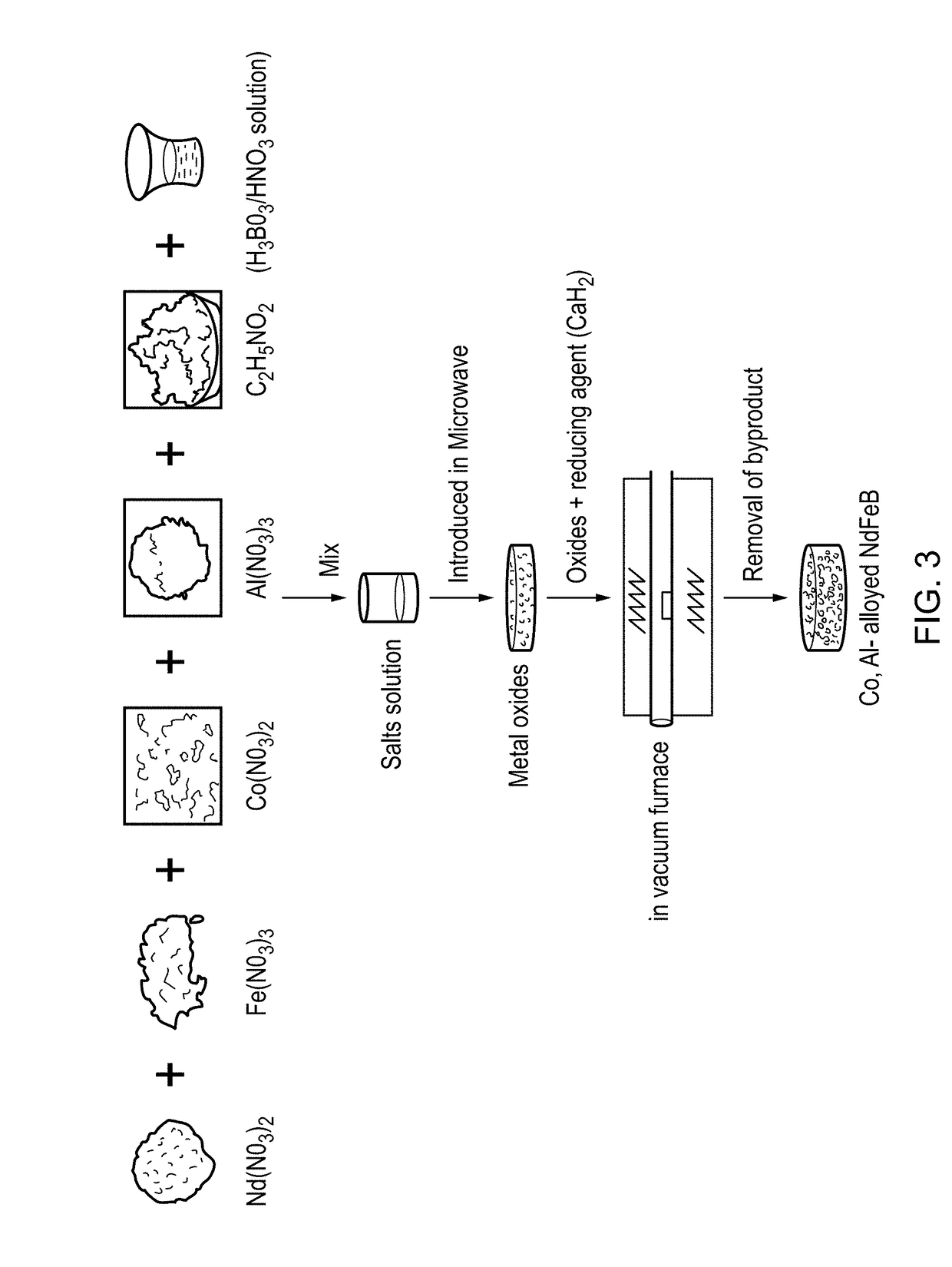Magnetic material and a method of synthesising the same
- Summary
- Abstract
- Description
- Claims
- Application Information
AI Technical Summary
Benefits of technology
Problems solved by technology
Method used
Image
Examples
Embodiment Construction
[0063]FIG. 3 illustrates schematically a process for the production of Co, Al alloyed NdFeB nanoparticles according to a first embodiment of the disclosure.
[0064]A first solution is prepared by dissolving boric acid in 4N Nitric Acid (HNO3).
[0065]This first solution is then combined with calculated amounts of iron nitrate nonahydrate (Fe(NO3)3), neodymium nitrate hexahydrate (Nd(NO3)3), cobalt nitrate hexahydrate (Co(NO3)2), aluminium nitrate (Al(NO3)3), and dissolved in deionized water to form a second solution.
[0066]Glycine (C2H5NO2) is added to the second solution in a molar ratio of 1:1 (second solution:glycine) to obtain a stable third solution.
[0067]The third solution is then subjected to microwave irradiation at a low microwave power of 330 W for 10 minutes. In one example of the process, a Sharp Model R-899R household microwave oven was used to generate the microwave irradiation.
[0068]Microwave heating of the third solution results in evaporation of water and other volatiles...
PUM
| Property | Measurement | Unit |
|---|---|---|
| Temperature | aaaaa | aaaaa |
| Force | aaaaa | aaaaa |
| Power | aaaaa | aaaaa |
Abstract
Description
Claims
Application Information
 Login to View More
Login to View More - R&D
- Intellectual Property
- Life Sciences
- Materials
- Tech Scout
- Unparalleled Data Quality
- Higher Quality Content
- 60% Fewer Hallucinations
Browse by: Latest US Patents, China's latest patents, Technical Efficacy Thesaurus, Application Domain, Technology Topic, Popular Technical Reports.
© 2025 PatSnap. All rights reserved.Legal|Privacy policy|Modern Slavery Act Transparency Statement|Sitemap|About US| Contact US: help@patsnap.com



